Our Research
The fourth division (BP4) of The Fundamental Research Department (Departament Badań Podstawowych) deals with research in astrophysics and astronomy, mainly their observational aspects. The BP4 division is located in Warsaw at 7 Pasteura street.
The research conducted at the Astrophysics Laboratory includes:
- Cosmology: CMB, large structures of the Universe, dark matter, non-standard cosmology and gravitational lensing
- Gravitational waves: Multi-messenger astronomy, new tools for cosmology
- Physics of galaxies: Formation and evolution of galaxies, AGN, quasars and gamma-ray burst
- Interstellar medium: Star formation, neutron stars and white dwarfs
The BP4 division is also involved in several international projects. Check our Scientific Projects page for more information.
Seminars
Upcoming seminars for all of NCBJ can be found here.
The seminar archive for NCBJ can be found here.
Latest News
Scroll down for the latest news about the research done by our division or click here.
World News
dr Pratik Dabhade from BP4 was a leading author in a recent paper studying odd radio circles. The paper, published in MNRAS, found an extremely rare double-ringed odd radio circle. This has created a stir around the world, attracting the attention of CNN (https://edition.cnn.com/2025/10/14/science/odd-radio-circles-double-rings) and CBS (https://www.cbsnews.com/news/most-powerful-odd-radio-circle-twins-ever-detected/).Conference Participation
BP4 participate in may national and intersectional conferences. We share our cutting edge research and enthusiasm with other astronomers across the world. Below are pictures from our trips across the globe over the last year or so.
Latest News
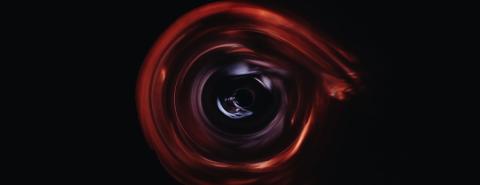
Giant hidden black hole discovered in the early universe
An international team of astrophysicists has discovered a giant black hole hidden among dust in a galaxy that already existed 1.4 billion years after the Big Bang. This is one of the first results of a project called Herschel Extragalactic Legacy Project (HELP). The lead co-author of the work is dr hab. Katarzyna Małek from the NCBJ Astrophysics Department.
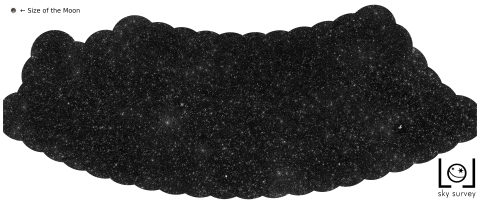
A starry sky made of more than 25,000 supermassive black holes
The map published in the journal Astronomy & Astrophysics reveals more than 25,000 active supermassive black holes in distant galaxies. It is the result of a survey of the sky carried out over radio frequencies. Dr hab. Katarzyna Małek from the NCBJ Astrophysics Division participated in the preparation of the work.
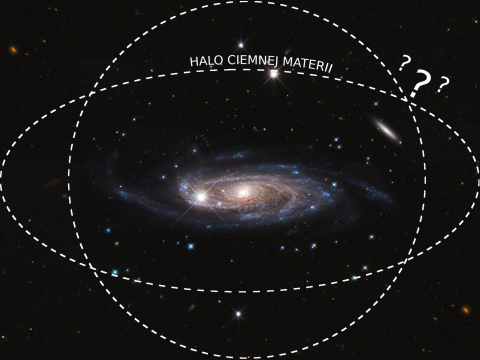
What is the shape of the dark matter halo?
Ph.D. Anna Durkalec from the NCBJ Astrophysics Division belongs to the group of 12 associate professors awarded in the Institute in 2020. Dr. Durkalec begins the description of her research by asking a few questions.
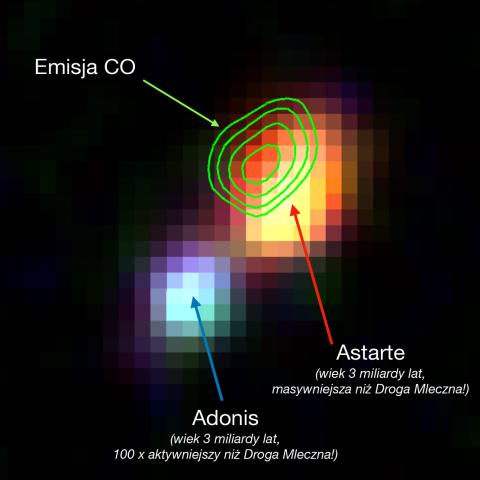
Sudden Death in the Universe - The agony of a massive dusty galaxy as seen by its blue companion
Heavily dust-obscured ultramassive star-forming galaxies in the early Universe contributed significantly to the cosmic star formation rate. But, how did such objects manage to build up their stellar masses at a relatively short time? Were they once starburst galaxies or were they gradually forming stars, exhausting their hydrogen reservoirs?
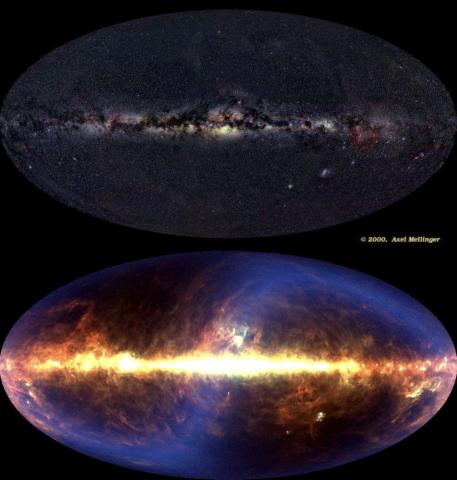
SONATA BIS: DINGLE - Dust IN Galaxies
Three NCBJ scientists received NCN SONATA BIS grants, which will allow them to build or strengthen their own research groups at the Institute. The project entitled "DINGLE - Dust IN Galaxies: Looking through its Emission" was prepared by Dr. Ambra Nanni from the NCBJ Astrophysics Division. The author explains its assumptions:
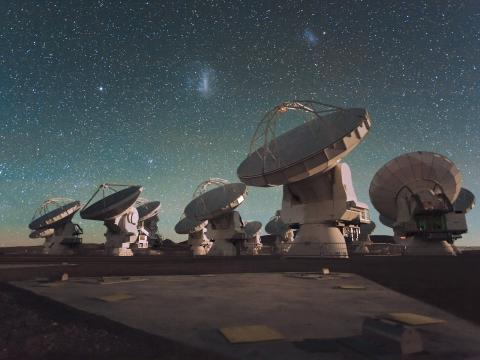
Stukając do wrót Pyłowych Gigantów
Międzynarodowy zespół naukowców, w tym dwoje naukowców z NCBJ - Katarzyna Małek i William Pearson - przedstawił dowody na szybki wzrost pyłu w młodych, ale już bogatych w metale galaktykach w odległym Wszechświecie. Badanie, opublikowano właśnie w czasopiśmie Astronomy & Astrophysics.












